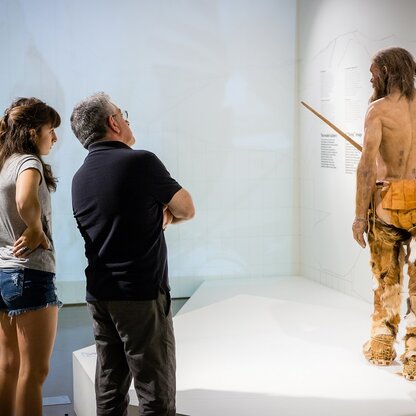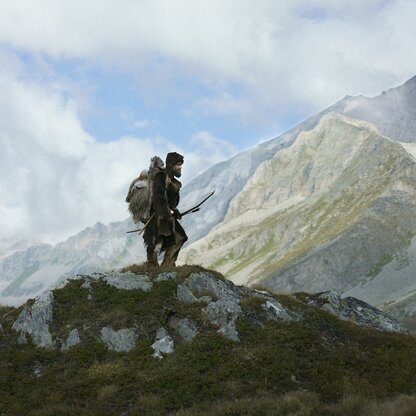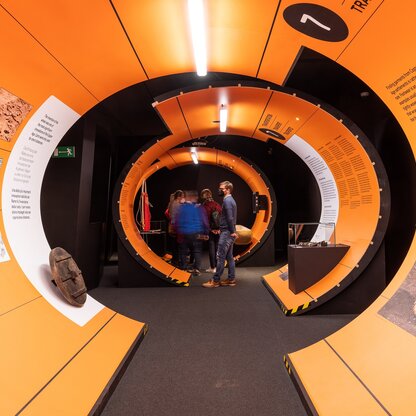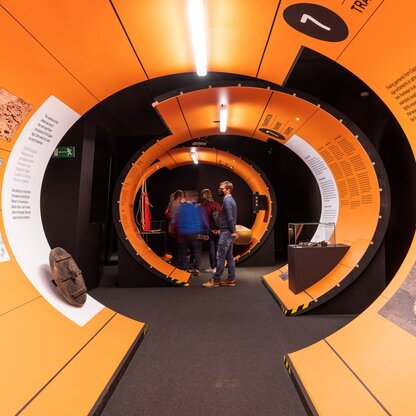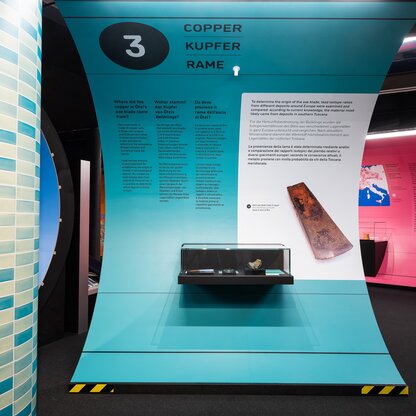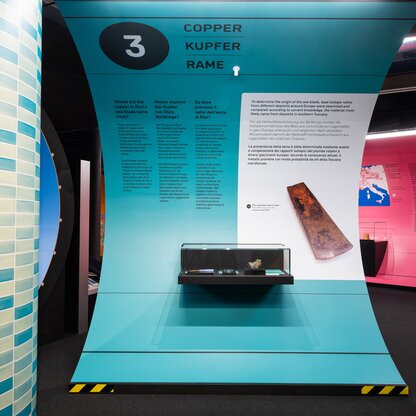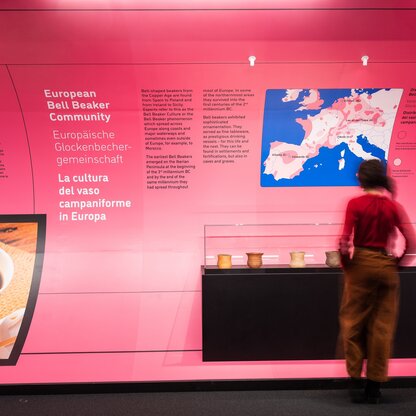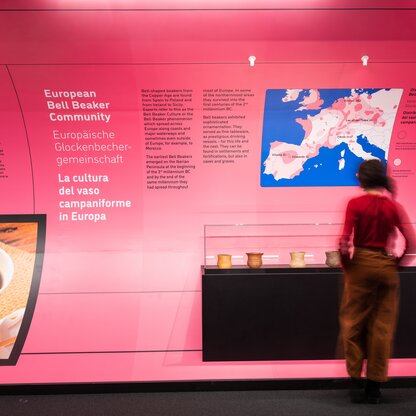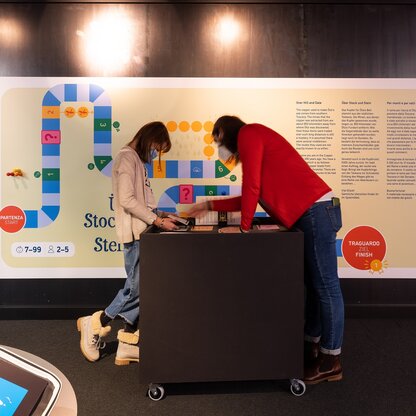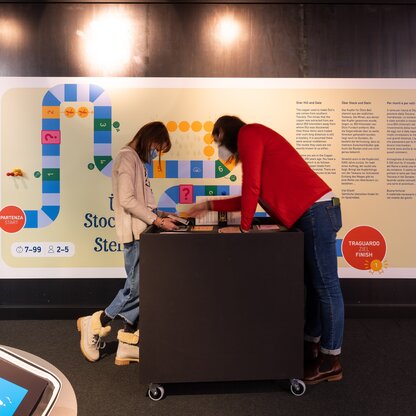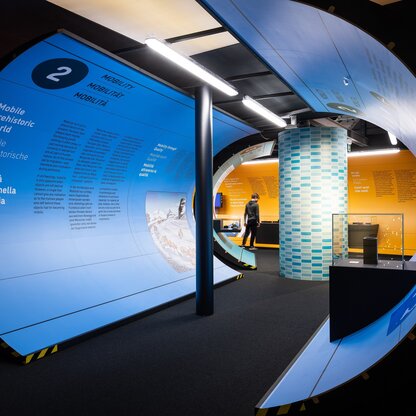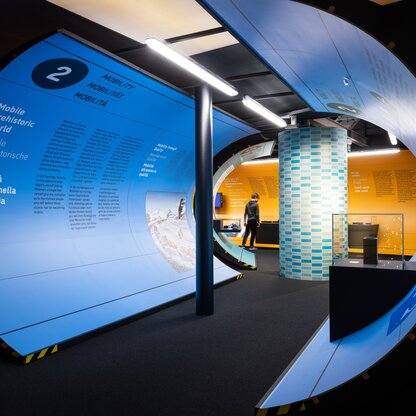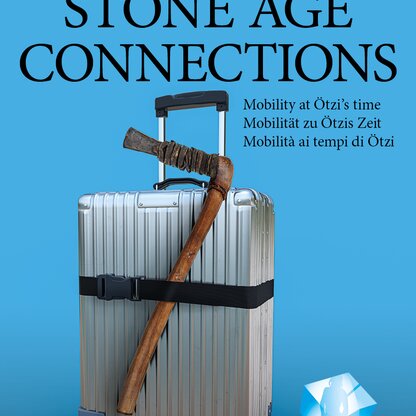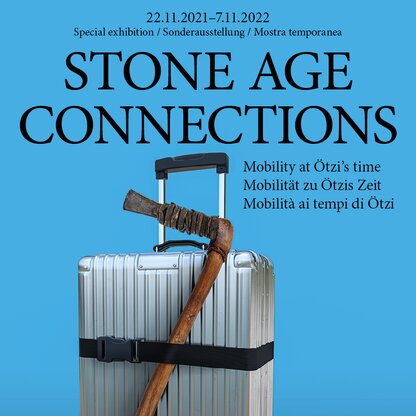Special Exhibition “STONE AGE CONNECTIONS. Mobility at Ötzi’s time”
Travelling, buying goods from all over the world, or moving all seems quite natural to us. We cannot imagine modern life without this level of mobility. But it took a long time to get there. The South Tyrol Museum of Archaeology’s new special exhibition has followed the Museum Year 2021 theme, mobility, launched by EUREGIO. The special exhibition is dedicated to the topic of mobility in the Copper Age – the time of Ӧtzi, the Iceman.
The first objects made of metal appeared in the Neolithic. With the new material “copper”, the exchange of raw materials and tools resulted in surprisingly active mobility, or location-independence, throughout Europe.
In archaeology, mobility can only be determined through material remains. These are original objects that have been found outside of their main distribution areas and that were brought there either as gifts or for trade. Significant examples from all over Europe have been obtained for the special exhibition. In addition to trade, mobility in the Copper Age is also examined by looking at the means of transportation and migration.
Materials on the move
Scientific methods developed in recent decades now allow us to determine the provenance of raw materials, proving that people overcame astounding distances. By studying the source of these raw materials, it has been proven that copper objects from the Balkans were circulating in the first half of the 4th millennium BC. The emergence of copper working technology in southern and central Italy also shifted the production of copper finds from earlier times – possibly as gifts – to central Europe. Considering this background, Ӧtzi’s axe blade from Tuscan copper deposits is a piece of evidence with international importance. It is presented in the context of finds from South Tyrol and Europe.
Ideas on the move
As objects are transferred, skills and technology also travel with them. The spread of ideas as well as culture is discussed using the emergence of Bell Beakers throughout Europe as an example. Clay, the raw material, was mostly obtained locally and is not the focal point of this area, but rather the ideas and thoughts that were shared among cultural groups.
People on the move
Objects were also passed on through migration, though this can only be determined by examining DNA. Genetic analyses confirmed two major waves of immigration to Europe that brought about significant cultural changes such as agriculture and the Indo-European language. Ӧtzi lived at a time between these two great waves of migration and science regards him as a connection between both genetic strains. Shoes, dugout canoes, backpacks, wheels: mobility in the Copper Age meant getting around on water, in settlements on the valley floor, and on the mountains. In the exhibition visitors can see what these things actually looked like with the help of significant finds from South Tyrol and the Alpine region or illustrated through reconstructions.
In the special exhibition visitors’ attention is drawn to today’s mobility in a thought-provoking and occasionally humorous way – also with the design, which is reminiscent of subway tunnels and modern means of transportation in general.
Visitors can view the special exhibition until 7 November 2022.
Special exhibition curatorial team: Andreas Putzer, Vera Bedin, Margit Tumler, Günther Kaufmann
Designs: Formbar. Laurin Kofler, Lukas Mayr, Farbfabrik. Philipp Putzer
Renovation of the permanent exhibition
While the special exhibition was being constructed, some areas of the permanent exhibition on Ӧtzi the Iceman were also updated.
Scientific results in the past few years were taken into consideration as were our experiences in museum mediation, which showed that original objects and interactive stations play a vital role.
To complement the image of Ӧtzi and his contemporaries, more space has been given to the environment during the Copper Age. Findings about the skills of Copper Age people are explained using the materials copper and flint. Visitors can also experience more recent research results from the fields of biology, medicine, and forensics, at some stations, both young and old can even slip into the role of researchers themselves.
The new area “Glacier Archaeology” offers the chance to see artifacts of global importance that have been freed from the ice in South Tyrol in recent years.
Renovations of other areas of the permanent exhibition (1st floor, Iceman) will continue in January 2022.
Curatorial team for the renovation of the permanent exhibition: Katharina Hersel, Paola Claut, Giuliana Plotegher
Designs: Doris Prenn/Studio Prenn
Photo: The new special exhibition “STONE AGE CONNECTIONS. MObility at Ötzi’s time” at the South Tyrol Museum of Archaeology, Bolzano, Italy (c) South Tyrol Museum of Archaeology / Silbersalz
Images may be used free of charge for press purposes.
PRESS CONTACT
Katharina Hersel
South Tyrol Museum of Archaeology
Via Museo / Museumstr. 43, I-39100 Bolzano/Bozen, Italy
phone +39 0471 320114
press@iceman.it, www.iceman.it
Facebook: OetziTheIceman
